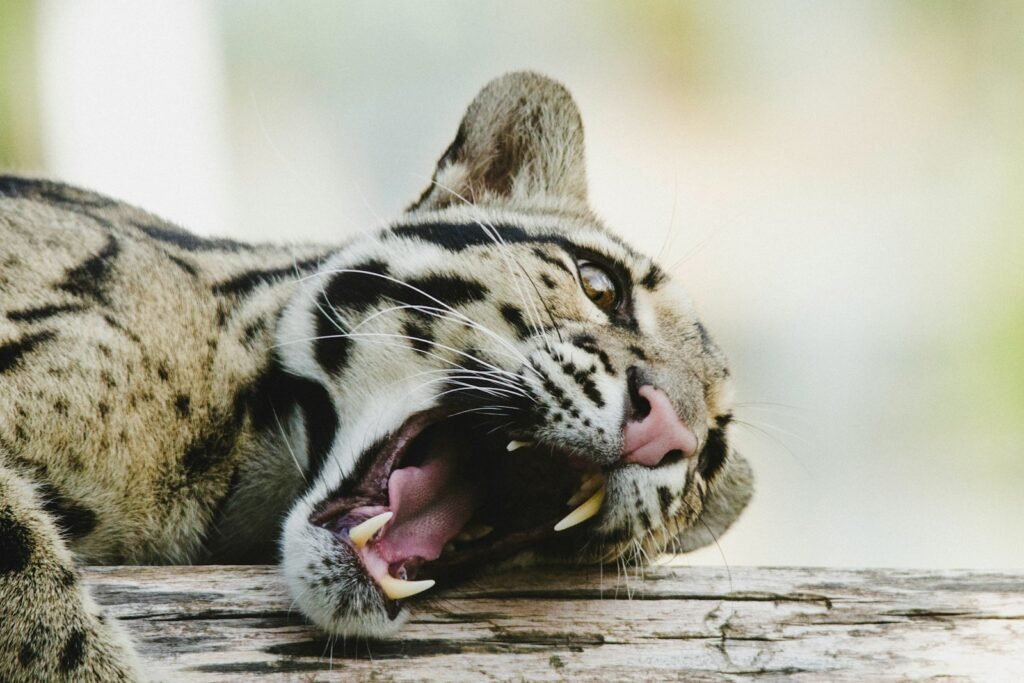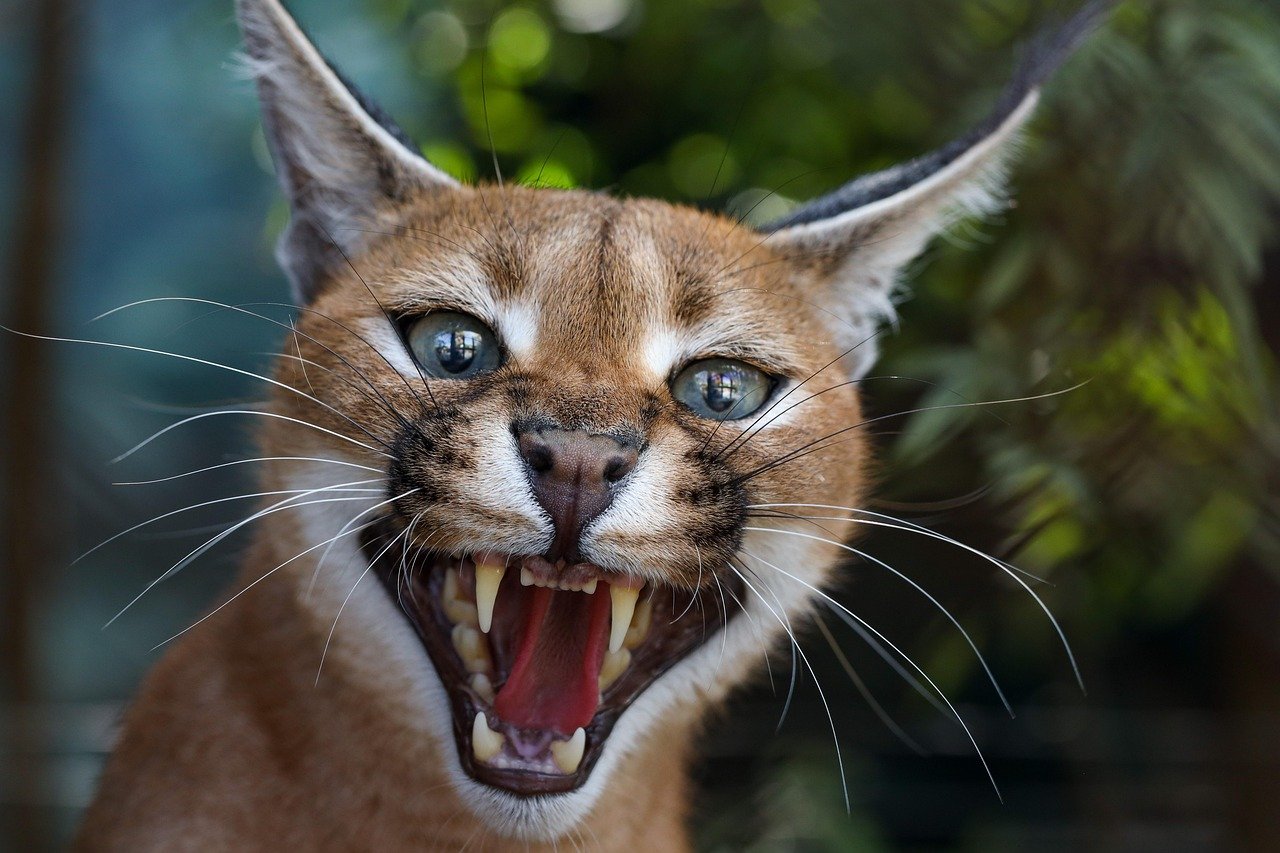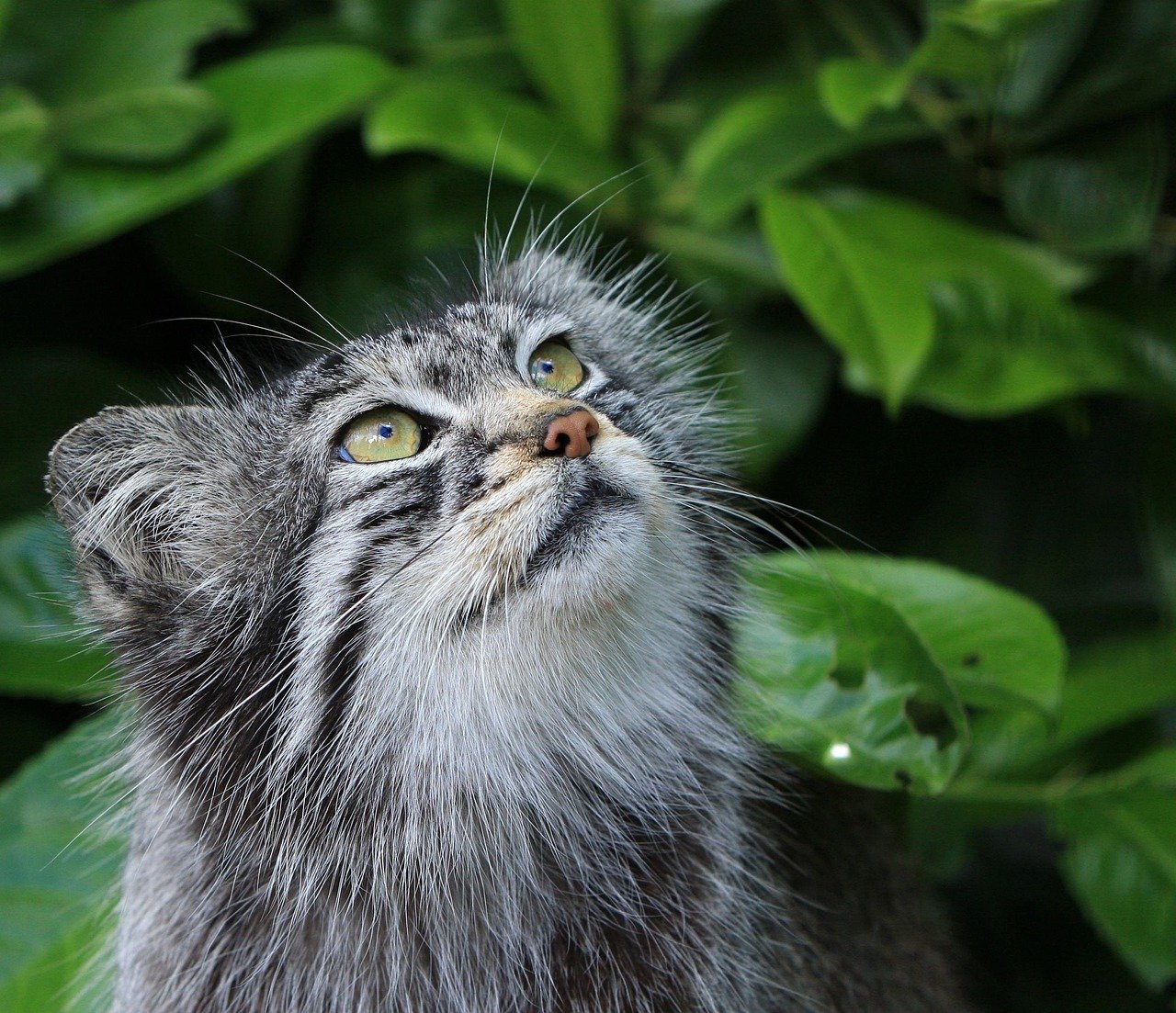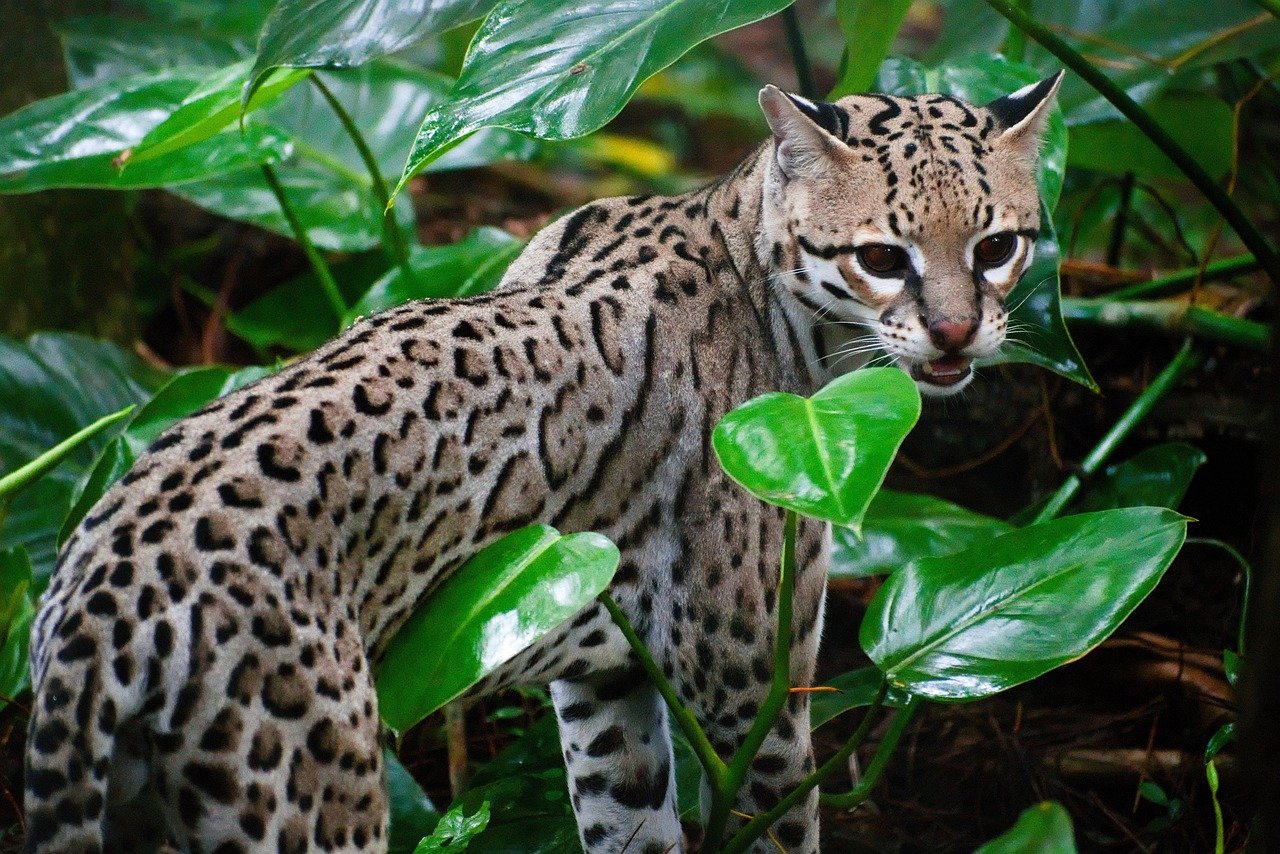Big cats have always fascinated humans with their beauty, power, and grace. Yet, some of these majestic creatures are so elusive that spotting them in the wild is a rare privilege. These big cats have mastered the art of camouflage and stealth, making them some of the most mysterious animals on the planet. In this article, we will explore the habitats of these elusive big cats, the reasons behind their secretive nature, and where you might catch a glimpse of these incredible animals.
The Mysterious Snow Leopard: Ghost of the Mountains
The snow leopard, often referred to as the “ghost of the mountains,” lives in the high-altitude regions of Central Asia. These big cats are incredibly well-camouflaged with their thick, grayish-white fur, allowing them to blend seamlessly into their rocky surroundings. They are mostly found in countries like Nepal, India, and China, inhabiting the steep and rugged terrain of the Himalayas. Snow leopards are elusive due to their solitary nature and the vast expanses of their territories, which can range from 12 to 39 square miles. Their reclusive behavior is also a survival mechanism, helping them avoid human encounters, which have historically posed a threat to their existence.
Amur Leopard: The World’s Rarest Big Cat

Native to the dense forests of the Russian Far East, the Amur leopard is critically endangered, with only around 100 individuals remaining in the wild. Their elusive nature is a result of the harsh climate and the need for vast territories to find sufficient prey. These leopards are known for their stunning, thick fur, which serves as excellent camouflage against the snowy backdrop of their habitat. They are most active at dawn and dusk, making it even harder for humans to spot them. Conservation efforts are underway to protect these magnificent creatures, focusing on habitat preservation and anti-poaching measures.
Jaguar: The Stealthy Predator of the Amazon

Jaguars are found in the dense rainforests of the Amazon Basin, where their elusive nature is enhanced by their excellent swimming abilities and preference for thick vegetation. These big cats have a unique coat pattern that blends perfectly with the dappled sunlight filtering through the forest canopy. Jaguars are solitary animals, spending most of their time hidden in the shadows, stalking their prey with incredible stealth. Their elusive behavior is also a means of avoiding human contact, as habitat loss and poaching continue to threaten their populations.
Clouded Leopard: The Enigmatic Jungle Dweller

The clouded leopard is a small to medium-sized big cat found in the dense forests of Southeast Asia. These cats are named for their distinctive cloud-like markings, which provide excellent camouflage in the dappled light of the forest. They are highly arboreal, spending much of their time in the trees, which adds to their elusiveness. Clouded leopards are secretive and solitary, rarely seen by humans, making them one of the least understood big cats. Their elusive nature is a result of their need to avoid larger predators and human disturbances in their diminishing habitats.
Sumatran Tiger: The Last of Its Kind
The Sumatran tiger, the smallest of all tiger subspecies, is native to the Indonesian island of Sumatra. These tigers are critically endangered, with fewer than 400 individuals remaining in the wild. Their elusive nature is a response to habitat loss and poaching, as they are forced to retreat deeper into the forest to survive. Sumatran tigers are known for their distinctive dark orange coat and black stripes, which help them blend into the dense vegetation of their habitat. Conservation efforts focus on protecting their habitat and reducing human-tiger conflicts to ensure their survival.
Asiatic Cheetah: Speed and Secrecy in the Iranian Desert

The Asiatic cheetah is a critically endangered subspecies found only in Iran. With fewer than 50 individuals left in the wild, these cats are incredibly elusive due to their sparse distribution and the vast desert landscapes they inhabit. Asiatic cheetahs are built for speed, with long legs and a slender body, allowing them to chase down prey over long distances. Their elusive nature is a result of their need to avoid human contact and the challenges of finding prey in the harsh desert environment. Conservation efforts are focused on protecting their remaining habitats and reducing human-wildlife conflicts.
Puma: The Ghost of the Americas
Also known as the cougar or mountain lion, the puma is found across North and South America, from the Canadian Yukon to the southern Andes. These big cats are highly adaptable and can thrive in a variety of habitats, including forests, deserts, and mountains. Pumas are solitary and elusive, often referred to as “ghost cats” due to their secretive nature. They are most active at dawn and dusk, making them difficult to spot. Their elusive behavior is a survival strategy, allowing them to avoid humans and other predators while hunting for food.
Black Panther: The Shadow in the Jungle
The black panther is not a separate species but rather a melanistic variant of the leopard or jaguar. These stunning cats are found in the dense forests of Asia and the Americas, where their dark coats provide excellent camouflage in the shadows. Black panthers are solitary and nocturnal, adding to their mysterious reputation. Their elusive nature is a result of their need to avoid detection by both prey and predators. Their striking appearance and secretive behavior have made them a symbol of mystery and power in various cultures around the world.
Indochinese Tiger: The Hidden Gem of Southeast Asia
The Indochinese tiger is a subspecies of tiger found in the forests of Southeast Asia, including Vietnam, Cambodia, and Laos. These tigers are smaller and more elusive than their Bengal and Siberian counterparts, making them difficult to study and conserve. Their elusive nature is a response to habitat loss and poaching, as they are forced to retreat deeper into the forest to find prey and avoid human encounters. Conservation efforts are focused on preserving their habitat and reducing the impact of illegal hunting to ensure their survival.
Leopard: The Master of Camouflage

Leopards are found across Africa and parts of Asia, known for their adaptability and elusive nature. These big cats have a distinctive spotted coat that provides excellent camouflage in a variety of habitats, from savannas to dense forests. Leopards are solitary animals, spending most of their time hidden in the shadows, stalking their prey with incredible stealth. Their elusive behavior is a means of avoiding human contact and larger predators, ensuring their survival in a rapidly changing world.
Marbled Cat: The Enigma of the Canopy
The marbled cat is a small, elusive feline found in the forests of Southeast Asia. These cats are highly arboreal, spending much of their time in the trees, where their marbled coat provides excellent camouflage. Marbled cats are solitary and secretive, rarely seen by humans, making them one of the least understood felines. Their elusive nature is a result of their need to avoid larger predators and human disturbances in their diminishing habitats. Conservation efforts are focused on preserving their forest homes and ensuring their survival in the wild.
Serval: The Silent Stalker of the Savannah
The serval is a medium-sized wild cat found in the grasslands and savannas of Africa. These cats are known for their long legs and large ears, which provide excellent hearing and help them locate prey in the tall grass. Servals are solitary and elusive, often hunting at night to avoid detection by predators. Their spotted coat provides excellent camouflage, allowing them to blend into their surroundings. The serval’s elusive nature is a survival strategy, helping them avoid human contact and larger predators in their habitat.
Fishing Cat: The Aquatic Hunter
The fishing cat is a medium-sized wild cat found in the wetlands of South and Southeast Asia. These cats are known for their unique ability to hunt and catch fish, using their partially webbed paws to scoop prey from the water. Fishing cats are solitary and elusive, often hunting at night to avoid detection by predators. Their spotted coat provides excellent camouflage in the reeds and grasses of their wetland habitat. The fishing cat’s elusive nature is a survival strategy, helping them avoid human contact and larger predators in their habitat.
Caracal: The Secretive Sprinter

The caracal is a medium-sized wild cat found in Africa, the Middle East, and parts of Asia. These cats are known for their distinctive tufted ears and incredible speed, which they use to catch prey in the open savannah. Caracals are solitary and elusive, often hunting at night to avoid detection by predators. Their reddish-brown coat provides excellent camouflage, allowing them to blend into their surroundings. The caracal’s elusive nature is a survival strategy, helping them avoid human contact and larger predators in their habitat.
Pallas’s Cat: The Fluffy Recluse of the Steppes

Pallas’s cat, also known as the manul, is a small wild cat found in the grasslands and rocky steppes of Central Asia. These cats are known for their dense, fluffy fur and round faces, which provide excellent insulation against the harsh climate. Pallas’s cats are solitary and elusive, often hunting at night to avoid detection by predators. Their thick coat provides excellent camouflage in their rocky habitat. The Pallas’s cat’s elusive nature is a survival strategy, helping them avoid human contact and larger predators in their habitat.
Ocelot: The Spotted Phantom of the Night

The ocelot is a medium-sized wild cat found in the forests and grasslands of Central and South America. These cats are known for their distinctive spotted coat, which provides excellent camouflage in the dappled light of the forest. Ocelots are solitary and nocturnal, adding to their mysterious reputation. Their elusive nature is a result of their need to avoid detection by both prey and predators. The ocelot’s striking appearance and secretive behavior have made them a symbol of mystery in various cultures around the world.
Rusty-Spotted Cat: The Tiny Enigma

The rusty-spotted cat is one of the smallest wild cats in the world, found in the forests and grasslands of India and Sri Lanka. These cats are known for their tiny size and distinctive rusty-red spots, which provide excellent camouflage in their habitat. Rusty-spotted cats are solitary and elusive, often hunting at night to avoid detection by predators. Their small size and elusive nature make them difficult to study and conserve. Conservation efforts are focused on preserving their habitat and ensuring their survival in the wild.
Sand Cat: The Desert Phantom
The sand cat is a small wild cat found in the deserts of North Africa and the Middle East. These cats are known for their ability to survive in harsh desert conditions, with adaptations such as thick fur on their paws to protect against hot sand. Sand cats are solitary and elusive, often hunting at night to avoid the extreme heat and detection by predators. Their sandy-colored coat provides excellent camouflage in their desert habitat. The sand cat’s elusive nature is a survival strategy, helping them avoid human contact and larger predators in their habitat.
Conclusion
The world of big cats is filled with mystery and intrigue, with each species exhibiting unique adaptations and behaviors that contribute to their elusive nature. From the snow leopard’s ghostly presence in the mountains to the sand cat’s survival in the desert, these majestic creatures continue to captivate our imaginations. The ongoing efforts to conserve and protect these big cats are crucial to ensuring their survival for future generations to admire and appreciate.
Hi, I’m Bola, a passionate writer and creative strategist with a knack for crafting compelling content that educates, inspires, and connects. Over the years, I’ve honed my skills across various writing fields, including content creation, copywriting, online course development, and video scriptwriting.
When I’m not at my desk, you’ll find me exploring new ideas, reading books, or brainstorming creative ways to solve challenges. I believe that words have the power to transform, and I’m here to help you leverage that power for success.
Thanks for stopping by, Keep coming to this website to checkout new articles form me. You’d always love it!






